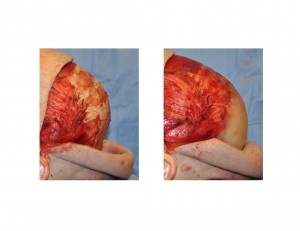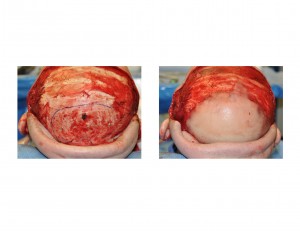Cosmetic skull deformities encompass a wide variety of concerns from flatness, pointy or high spots, ridges, bulges and asymmetries. But one of the most common head shape concerns is the flat back of the head. This specifically refers to varying degrees of lack of occipital projection, usually occupying an area between the top of the skull in the back down to the horizontal level of the upper portion of the ear. The causes are well known as a minor variant of occipital brachycephaly and often develop from early infantile positioning.
While flatness of the back of the head may seem trivial, to some affected it represents a significant aesthetic concern. The lack of a round posterior cranial shape is hidden by those concerned with caps and hairstyles and even devices that make the hair have more projection. Some refuse to go swimming so their hair is not flattened to reveal an absent occipital roundness. Others feel their ‘flat head’ make them look unattractive and facially disproportionate.

A unique feature of most augmentation onlay cranioplasties, regardless of their location, is that the material must be applied to a smooth round surface. In addition, these round skull surfaces offer no inherent stability with most of their locations being the equivalent of on the ‘side of a cliff’. As no known onlay cranioplasty material truly integrates into the underlying bone (or bone grows up into the implanted material), engagement of the material onto the skull’ surface has benefit. This is most conveniently done with small screw fixation.

The pre-material placement of screws in onlay cranioplasty is useful for more than just implant anchorage. They are also helpful in setting the thickness of the applied material. By placing screw with lengths for the amount of thickness desired, the material can be applied using the screws as contouring guides.
Occipital cranioplasty can provide significant cosmetic improvement to those afflicted with a flat back of the head. Modern biomaterials such as titanium screws and acrylic and hydroxyapatite composites can very effectively create a more aesthetically pleasing occipital contour. Soon custom skull implants made from the patient’s 3D CT scan may become the preferred skull augmentation method.
Dr. Barry Eppley
Indianapolis, Indiana


